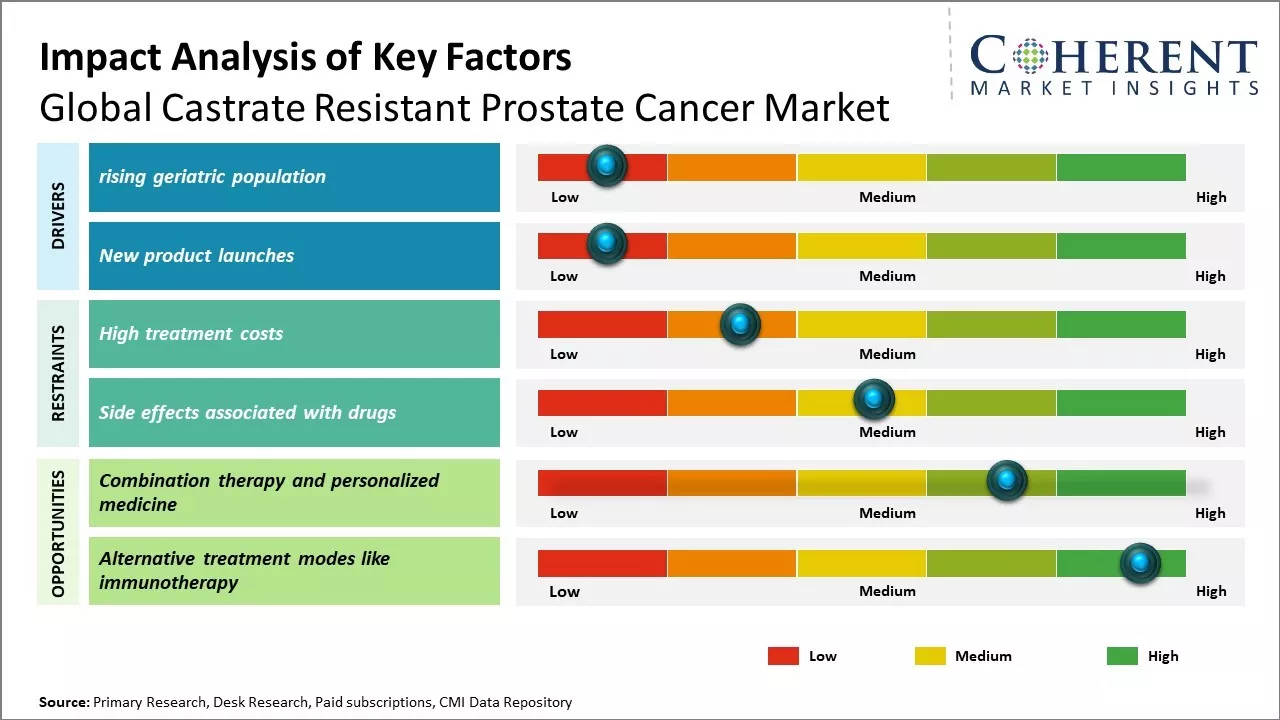Global castrate resistant prostate cancer market is estimated to be valued at USD 10.66 Bn in 2025 and is expected to reach USD 19.26 Bn by 2032, exhibiting a compound annual growth rate (CAGR) of 8.8% from 2025 to 2032.

To learn more about this report, Request sample copy
The market growth is primarily driven by rising geriatric population globally susceptible to develop prostate cancer and high adoption of premium-priced targeted therapies for metastatic castrate resistant prostate cancer.
Global castrate resistant prostate cancer market trend involves exponential rise in therapeutics and treatment options for patients with mCRPC. Introduction of new drug classes such as androgen receptor inhibitors, immune-modulators, kinase inhibitors along with combination therapies can transform the treatment algorithm and clinical outcomes in the near future. Wider acceptance of novel targeted therapies can drive the market growth during forecast period.
Rising Geriatric Population
Rising global population of elderly citizens aged 65 years and above can drive the castrate resistant prostate cancer market growth globally. According to the data published by World Health Organization in 2022, the number of people aged 65 years or older is projected to increase from 703 million in 2019 to 1.5 billion in 2050 worldwide. Prostate cancer is one of the highly prevalent cancer types seen in men above 65 years of age. As men progress to older age groups, their chances of developing prostate cancer and its castrate resistant form also increases considerably. Aging leads to weakening of the immune system and other physiological changes in the body, which make elderly men more vulnerable to cancers. Specifically for prostate cancer, rising levels of male hormones like testosterone in aging bodies create a supportive environment for cancer cells to thrive. Since castrate resistant prostate cancer is an advanced stage of prostate cancer where the primary treatment of hormone therapy becomes ineffective, its patient pool directly draws from the increasing population of elderly prostate cancer patients. This demographic shift boosts demand for novel drugs and therapies targeted towards managing castrate resistant prostate cancer symptoms and progression.
Joining thousands of companies around the world committed to making the Excellent Business Solutions.
View All Our Clients